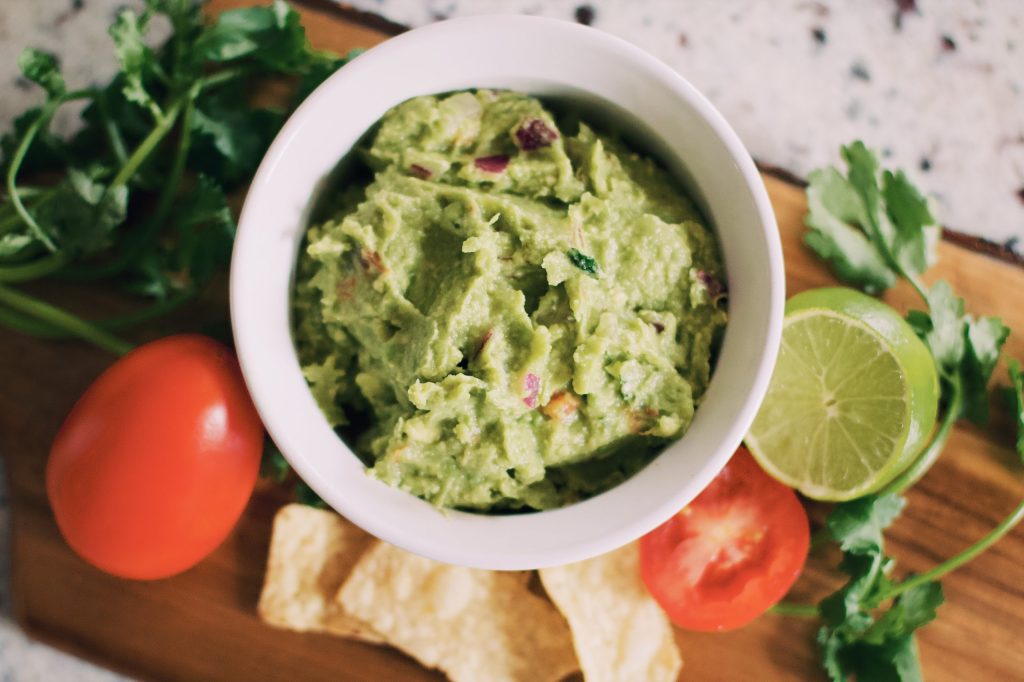Everyone loves guacamole, even food puritans. It’s like ice cream or donuts — but healthy and good for you. (No need to ask about the fried tortilla chips or calories.)
On Super Bowl Sunday, it is estimated that Americans will eat 120 million pounds of avocados, mostly in the form of guacamole. It’s the brownish-green fruit’s big day. Not by accident, Mexico’s avocado trade association runs elaborate ads each game. “The fruit that can change the world, alter history, and make everything better” is its 2023 Super Bowl offering promises.
Avocados are a happening food item worldwide, and Mexico leads in sales. Valued at $3 billion last year, its avocado exports were greater than tequila or beer. South America is getting in on the cultivation game with an eye toward rapidly growing UK and European markets.
Long beloved by Californians and Mexicans, avocados were somewhat exotic to the rest of the nation until the 1990s. Mexican food was then going mainstream, and guac-and-chips is a high-profit, popular starter on menus. Founded in 1993, Chipotle Mexican Grill has nearly 3,000 US outlets. There are 7,800 Taco Bells. Additionally, since 2000, the Mexican-origin population in the country has about doubled. Domestic avocado consumption has risen four-fold to eight pounds per capita annually, and continues to climb.
Among avocado connoisseurs, favored varieties are the Fuerte and Bacon with their oils, super-creamy fruit, rich taste, and thin skin. But they don’t travel well, and thus the California hybrid Hass avocado has triumphed worldwide. It too bears a soft, tasty fruit, ripens slowly, and its thick skin protects against bruising.
US output, mainly in California, has shrunk to about one tenth the size of avocado imports from Mexico, whose subtropical climate, volcanic soil, and hillside drainage make for ideal year-round cultivation. In the right soil and climate, avocado trees are easy to grow, long-lived, and prolific.
In 1997, in exchange for grain export rights, over the objection of California growers, the US first allowed Mexican avocado imports. Avocados started streaming northward. With year-round production and an export monopoly, Michoacán state has prospered with some 42,000 avocado orchards, with packing and processing centered in the city of Uruapan.
It is said that private security forces and grower extortion are common in the hinterlands. Supply lines from field to factory are often referred to as “opaque.” USDA inspectors are on the lookout for illegal or pest-ridden product. But getting fruit to processors, that’s largely in the hands of Mexican nationals, many of whom — it should be well understood — are limited-government enthusiasts.
Crime-friendly, gang-related paramilitaries and anti-crime vigilantes periodically face off. But hazy reports about “drug cartels” investing in the highly regulated avocado business are impossible to verify. (Many US residents wrongly conceive of crime and cartels as a ubiquitous force throughout Mexico.)
Legitimate concerns over rapid deforestation and the reckless expansion of avocado plantations puts the avocado-rich Michoacán state in an awkward position. Prime beneficiaries are small farmers with five or ten acres in fruit that mean the difference between comfort and want for them, their families, and their workers.
Like all agricultural processing and distribution, avocado production is heavily capitalized. Reliable refrigeration, sanitation, and logistics from packers to distant warehouses from Texas to New Jersey are essential. Publicly held Calavo — the California-based avocado growers cooperative — owns or leases major Mexico operations. Private limited partnerships and international consortiums of American and Mexican capital control the remainder.
The guacamole you get in a restaurant almost certainly comes from pulp, not from fresh avocados. Lightly preserved with salt and lime, pulp is frozen, shipped, and sold in smallish packages through distributors from Simplot to Sysco. This base varies in taste, quality and texture, and individual restaurants are expected to add their own touches and seasoning. Other pulp ends up as pre-fab guacamole in branded supermarket tubs, goosed with enough preservatives to keep everything “fresh” and green, possibly forever. With months-long shelf dates, this flavored green paste cannot match the real thing.
What then is el guacamole autentico?
First of all, it’s correctly pronounced WA-KA-MOLE-EH, no hard gringo G, and it’s best made and eaten fresh, even in restaurants.
Many variations and “secret recipes” exist. For the classic version, mash peeled and seeded, ripe avocados in a bowl (for chunky) or whir in a food processor (for creamy), then blend in as you wish a small amount of chopped tomato, minced onion, lemon or (better) lime juice. Add salt for taste. That’s it! A touch of garlic, cilantro, cayenne, or jalapeno? Optional, taking the dip from mild to spicy. Overdoing the citrus will make guac bitter. You must use a Haas-type avocado.
The large Florida fruit often seen in the East that originates the West Indies is a tasteless hardball that cannot be turned into anything really delicious. As a base for guacamole, it is an automatic fail.
Save the sour cream and sliced olives for the nachos. Black beans, pomegranate seeds, shredded cheese, and various culinary mission creeps are not improvements on the basics. Guacamole and goat-cheese bruschetta? Kale-based guacamole? Chocolate cake with avocado frosting? No thank you, not tonight!
The why of recipe overkill and food fetishes can await another day. On Super Bowl Sunday, it’s time-out for a green-slathered chip that might — who knows? — change the world, alter history, and make everything better.

























